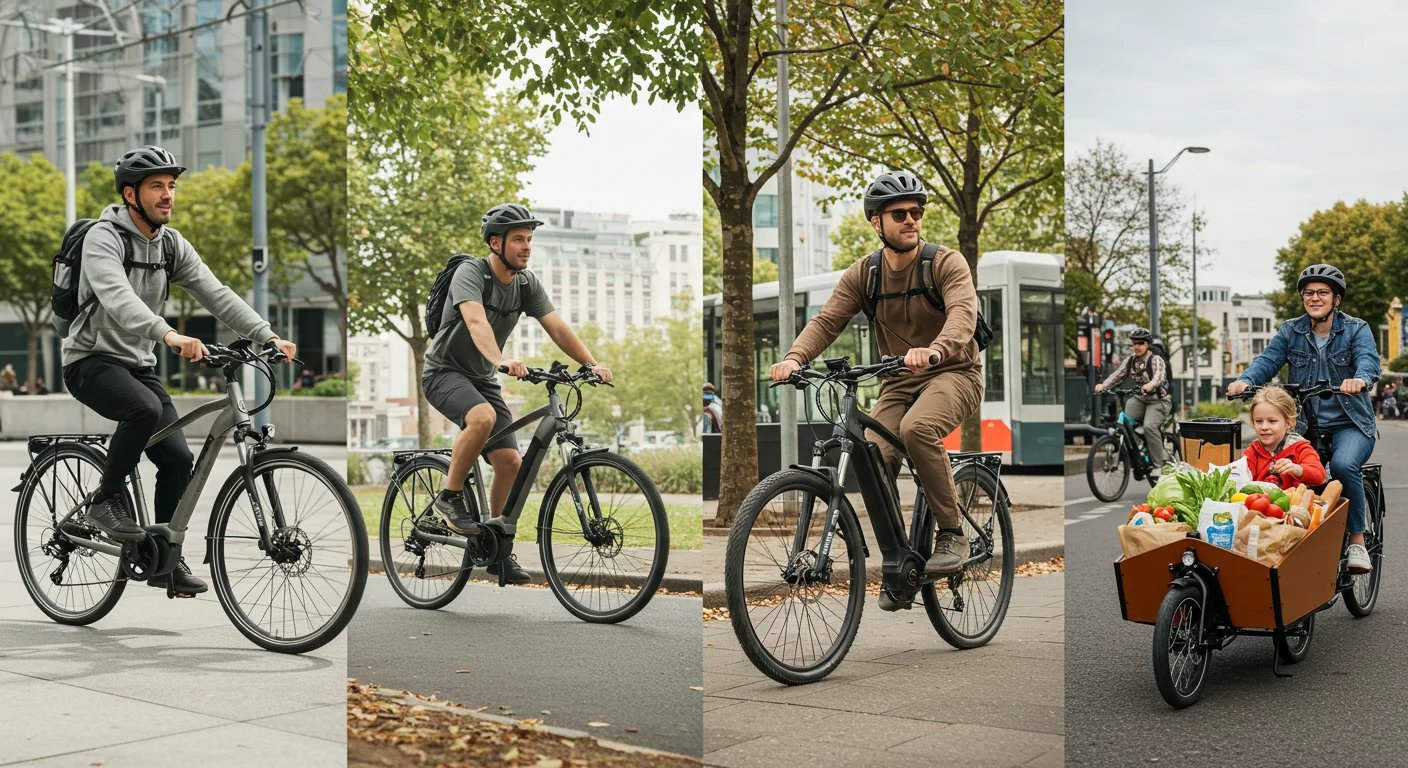1. How to Choose the Right Electric Bike for Your Needs?
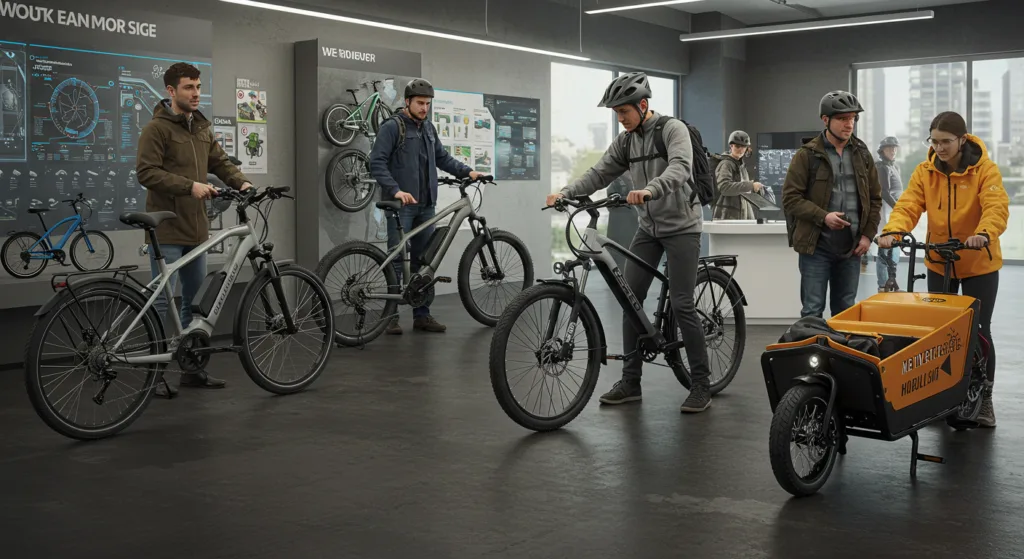
Buying an electric bike is a big decision, and choosing the right one depends on several factors, including your riding style, terrain, and budget. With so many options available, making the right choice can be overwhelming. Here’s what you need to consider:
Your Riding Purpose
Different e-bikes are designed for different use cases. Identifying your primary need will help narrow your options:
- Commuting – Look for a lightweight e-bike with a good range (40-60 miles per charge) and fast charging time.
- Mountain Biking – Choose a model with a powerful mid-drive motor (750W-1000W) and full suspension for off-road durability.
- Cargo & Utility – Opt for an e-bike with a sturdy frame, high load capacity (up to 400 lbs), and long battery life.
- Leisure & Fitness – Consider a hybrid or cruiser e-bike with pedal-assist modes for a balanced ride.
Motor Type: Hub vs. Mid-Drive
- Hub Motors – Found in the rear or front wheel, they are more affordable and require less maintenance. Ideal for city riding.
- Mid-Drive Motors – Positioned near the pedals, they offer better weight distribution and efficiency, making them perfect for hills and off-road use.
Battery & Range
Battery capacity is a key factor in determining how far you can go on a single charge. Look for:
- Higher Watt-Hours (Wh) – A 500Wh battery lasts longer than a 250Wh one.
- Removable Batteries – Easier to charge and replace when needed.
- Charging Time – Most e-bike batteries take 3-6 hours to fully charge.
Local Laws & Regulations
Electric bike laws vary by country and even state. In the U.S. and Europe, e-bikes are classified into three categories:
- Class 1 – Pedal assist only, max speed of 20 mph.
- Class 2 – Throttle-powered, max speed of 20 mph.
- Class 3 – Pedal assist only, max speed of 28 mph.
Always check your local regulations before purchasing.
2. What Are the Key Features to Look for in an E-Bike?

Understanding key e-bike features will help you make a smart buying decision. Here are the most important elements to evaluate:
1. Battery Capacity & Range
- Typical Range – Most e-bikes offer 25-75 miles per charge, depending on terrain and assistance level.
- Battery Lifespan – A lithium-ion e-bike battery typically lasts 3-5 years or 500-1,000 charge cycles.
- Energy Efficiency – Look for a battery with at least 500Wh for long-distance rides.
2. Motor Power & Performance
- 250W-350W – Best for city riding and flat terrain.
- 500W-750W – Ideal for moderate hills and heavier riders.
- 1000W+ – Designed for steep inclines and high-performance needs.
3. Pedal Assist vs. Throttle
- Pedal Assist (PAS) – Engages the motor when pedaling, offering a more natural ride.
- Throttle Mode – Allows you to ride without pedaling, like a scooter.
Many e-bikes offer both PAS and throttle, giving you flexibility in different situations.
4. Frame & Weight
- Aluminum – Lightweight and corrosion-resistant.
- Carbon Fiber – Expensive but extremely light and strong.
- Steel – Heavier but more durable for off-road riding.
Weight matters – a typical e-bike weighs 40-70 lbs, so consider whether you’ll need to carry it.
5. Braking System
- Hydraulic Disc Brakes – Offer superior stopping power, even in wet conditions.
- Mechanical Disc Brakes – More affordable but require more maintenance.
- Rim Brakes – Less effective for e-bikes due to higher speeds and weight.
6. Smart Features & Connectivity
Modern e-bikes come with advanced features like:
- LCD Displays – Show speed, battery life, and distance traveled.
- GPS Tracking – Helps prevent theft and assists in navigation.
- App Integration – Allows you to adjust settings, monitor battery life, and track rides.
Investing in an e-bike with the right features ensures better performance, comfort, and longevity.
3. How Long Does an Electric Bike Battery Last?

The lifespan of an electric bike battery depends on multiple factors, including usage, charging habits, and battery type. Here’s what you need to know:
Average Battery Lifespan
A high-quality lithium-ion battery lasts between 3-5 years or 500-1,000 charge cycles. This means:
- If you charge your e-bike 3-4 times per week, it should last 4-5 years before noticeable degradation.
- After 500 charge cycles, the battery may retain 70-80% of its original capacity.
Factors Affecting Battery Life
- Charging Habits
- Avoid overcharging (unplug after a full charge).
- Use the original charger to prevent overheating.
- Store at 50-80% charge if not using for long periods.
- Riding Conditions
- Extreme temperatures (below 32°F or above 100°F) reduce battery efficiency.
- Frequent hill climbing and high speeds drain the battery faster.
- Weight Load & Terrain
- Heavier riders and steep inclines require more power, reducing battery life.
- Riding on flat surfaces and using lower assistance levels extends battery range.
Signs Your Battery Needs Replacement
- Reduced Range – If your battery drains faster than usual, it may be degrading.
- Overheating – Excessive heat during charging or riding indicates battery wear.
- Slow Charging – If charging takes significantly longer than before, replacement may be needed.
How to Extend Battery Life
- Charge before reaching 20% to prevent deep discharge.
- Store in a cool, dry place (ideal temperature: 50-77°F).
- Use pedal assist more often instead of full throttle to reduce battery strain.
Investing in a high-quality battery and maintaining proper charging habits ensures a longer, more efficient riding experience.
4. What Is the Best Motor Type for an E-Bike? Hub vs. Mid-Drive
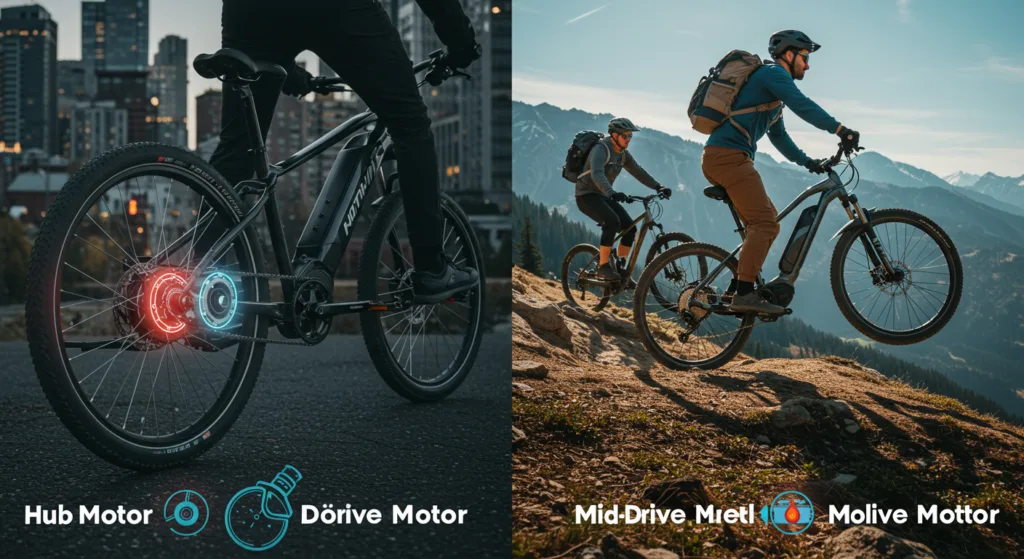
Choosing between a hub motor and a mid-drive motor is one of the most important decisions when buying an electric bike. Each motor type has distinct advantages depending on the terrain, performance needs, and budget.
Hub Motors: Affordable and Low Maintenance
Hub motors are located inside the wheel hub, either at the front or rear.
Pros:
- Generally more affordable than mid-drive motors
- Requires less maintenance due to fewer moving parts
- Operates quietly with a smooth acceleration
- Works well for city commuting and flat terrain
Cons:
- Adds extra weight to the wheel, affecting balance
- Less efficient on steep hills and rugged terrain
- Repairs can be complicated since the motor is inside the wheel
Best for:
- Urban commuters who need a simple, cost-effective e-bike
- Riders who prefer minimal maintenance and straightforward operation
Mid-Drive Motors: Superior Power and Efficiency
Mid-drive motors are positioned at the bike’s bottom bracket, near the pedals, and directly power the crank.
Pros:
- Provides better weight distribution and balance
- Offers greater torque and efficiency, making hill climbing easier
- Works seamlessly with the bike’s gears for smoother rides
- Delivers a more natural pedaling experience
Cons:
- Typically more expensive than hub motors
- Requires more maintenance due to added mechanical complexity
- Chain and drivetrain components wear out faster
Best for:
- Riders who frequently tackle hills or off-road trails
- Cyclists looking for high performance and efficiency
- Those willing to invest in a premium riding experience
Which Motor Should You Choose?
If you need a budget-friendly, low-maintenance option for city commuting, a hub motor is a great choice. However, if performance, efficiency, and power are top priorities, a mid-drive motor is worth the investment, especially for hilly or off-road conditions.
5. Are Electric Bikes Legal in Your Area? Laws & Regulations Explained
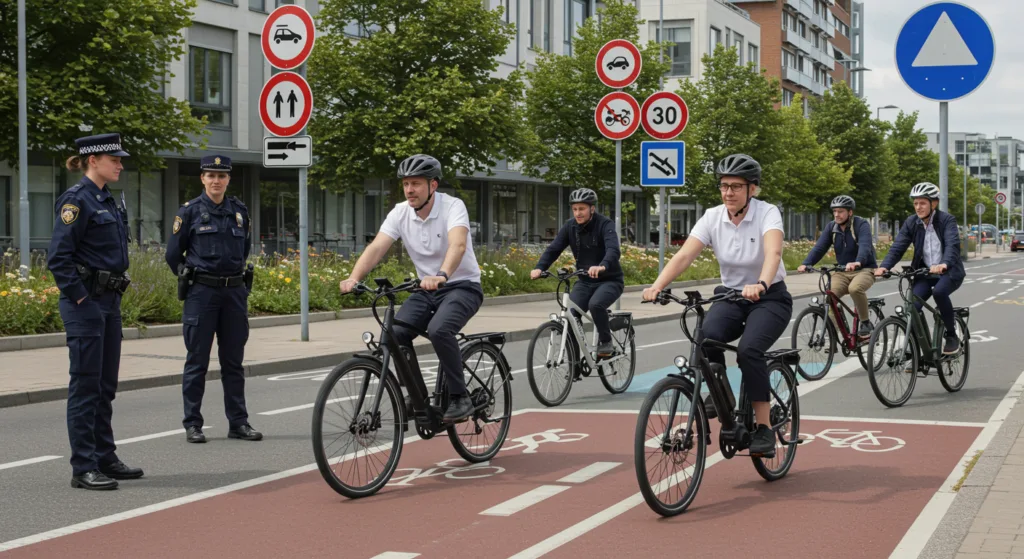
Electric bike laws vary significantly between countries and even states, so understanding local regulations before purchasing is essential.
Common E-Bike Classifications
Many countries categorize electric bikes into three main classes:
- Class 1: Pedal-assist only, with a maximum speed of 20 mph
- Class 2: Throttle-powered with a maximum speed of 20 mph
- Class 3: Pedal-assist with a maximum speed of 28 mph, often requiring a helmet
U.S. E-Bike Laws
- Most states follow the three-class system, but some have additional restrictions.
- Helmet requirements vary by state, especially for Class 3 e-bikes.
- In many areas, Class 2 e-bikes are not allowed on bike paths or certain trails.
- Some states require riders under 16 years old to wear a helmet regardless of the bike class.
European E-Bike Laws
- The EU standard limits electric bikes to 250W motors with a max speed of 15.5 mph (25 km/h).
- Throttle-only e-bikes (without pedaling) are generally restricted.
- In most European countries, insurance and registration are not required for pedal-assist e-bikes.
Other Global Regulations
- Canada: Motor power limited to 500W, and max speed is 20 mph (32 km/h).
- Australia: E-bikes must have a 250W motor limit with pedal assistance only.
- China: Stricter regulations in cities like Beijing, requiring registration for higher-powered e-bikes.
Where Can You Ride an E-Bike?
- Many cities allow e-bikes on bike lanes and public roads, but some prohibit them on sidewalks.
- Off-road and nature trails may have restrictions based on local environmental laws.
- Some national parks and trails have speed limits or prohibit certain e-bike classes.
How to Stay Compliant
- Check your country’s specific e-bike regulations before purchasing.
- Always wear a helmet if required by law.
- Be aware of speed limits and designated riding areas in your city.
Knowing your local laws ensures a safe and hassle-free riding experience while avoiding potential fines or restrictions.
6. How Much Does an Electric Bike Cost? Budgeting for Your Purchase
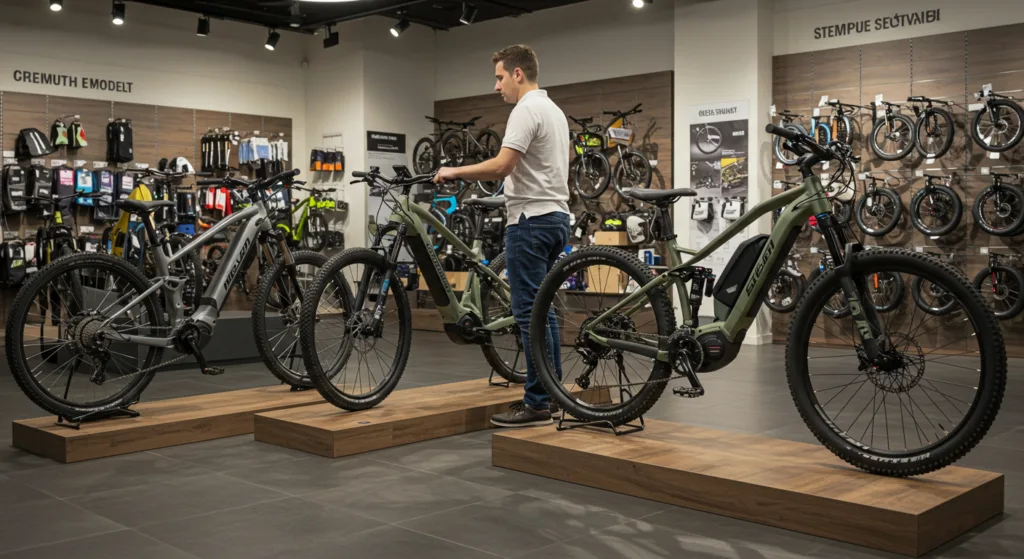
E-bike prices vary widely based on factors like motor type, battery capacity, and additional features. Understanding the cost breakdown can help you budget effectively.
Price Ranges for Different E-Bike Categories
- Entry-Level E-Bikes ($500 – $1,500)
- Basic features with smaller batteries (250Wh-400Wh)
- Suitable for casual riders and city commuting
- Typically equipped with hub motors and mechanical disc brakes
- Mid-Range E-Bikes ($1,500 – $3,000)
- Better battery life (500Wh-750Wh) with improved range
- More powerful motors (500W-750W) for hilly areas
- Includes features like hydraulic brakes, suspension forks, and app connectivity
- High-End E-Bikes ($3,000 – $8,000+)
- High-performance mid-drive motors with 750W-1000W power
- Premium components (carbon fiber frames, advanced gearing systems)
- Long-range batteries (up to 100 miles per charge)
- Often used for off-road, mountain biking, or professional use
Additional Costs to Consider
- Battery Replacement
- A new battery costs $300 – $800, depending on capacity and brand.
- Lithium-ion batteries last 3-5 years before needing replacement.
- Accessories & Upgrades
- Helmet: $50 – $200
- Locks & Security: $50 – $150
- Lights & Reflectors: $30 – $100
- Pannier Racks & Cargo Bags: $50 – $300
- Maintenance Costs
- Annual servicing: $100 – $300
- Brake pad replacement: $20 – $50
- Tire replacement: $30 – $80
Tips for Budgeting
- Determine your needs first – commuter, off-road, or cargo.
- Consider total cost of ownership, not just the upfront price.
- Look for warranty coverage – many e-bikes come with 1-2 years of warranty on the battery and motor.
- Check for government incentives – some regions offer rebates or subsidies for e-bike purchases.
By understanding e-bike costs, you can find the right balance between performance and budget while ensuring a smart investment.
7. What Are the Different Types of E-Bikes & Which One Is Best for You?
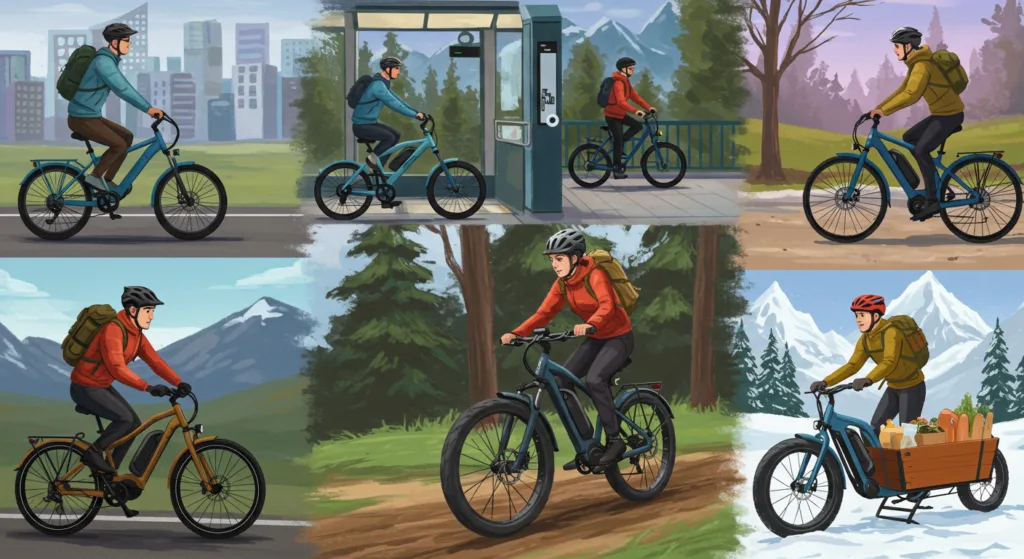
Electric bikes come in various designs, each tailored to specific riding styles and needs. Understanding the different types will help you choose the best one for your lifestyle.
1. Commuter E-Bikes
- Designed for daily urban riding with a comfortable frame.
- Features: Lightweight, built-in lights, fenders, and rear racks.
- Best for: City commuting, errands, and short to medium rides.
2. Folding E-Bikes
- Compact and foldable for easy transport and storage.
- Features: Smaller wheels, lightweight frame, and quick-fold mechanism.
- Best for: Apartment dwellers, travelers, and multi-modal commuters.
3. Mountain E-Bikes (E-MTBs)
- Built for off-road and rugged terrain with powerful motors.
- Features: Mid-drive motor, full or front suspension, and wider tires.
- Best for: Trail riding, adventure biking, and hilly terrains.
4. Fat Tire E-Bikes
- Equipped with extra-wide tires for increased traction.
- Features: Stable ride on snow, sand, and rough surfaces.
- Best for: Riders in extreme weather conditions or challenging terrains.
5. Cargo E-Bikes
- Designed to carry heavy loads, groceries, or even passengers.
- Features: Reinforced frame, large racks, and high load capacity (up to 400 lbs).
- Best for: Families, delivery services, and transporting goods.
6. Road & Hybrid E-Bikes
- Lightweight design with efficiency in mind for long distances.
- Features: Narrow tires, aerodynamic frame, and minimal weight.
- Best for: Long-distance riding, exercise, and fitness enthusiasts.
How to Choose?
- If you need a bike for daily commuting, go for a commuter or folding e-bike.
- For off-road or mountain trails, choose a mountain or fat tire e-bike.
- If carrying cargo or kids, a cargo e-bike is the best option.
8. Do You Need a License or Insurance for an Electric Bike?
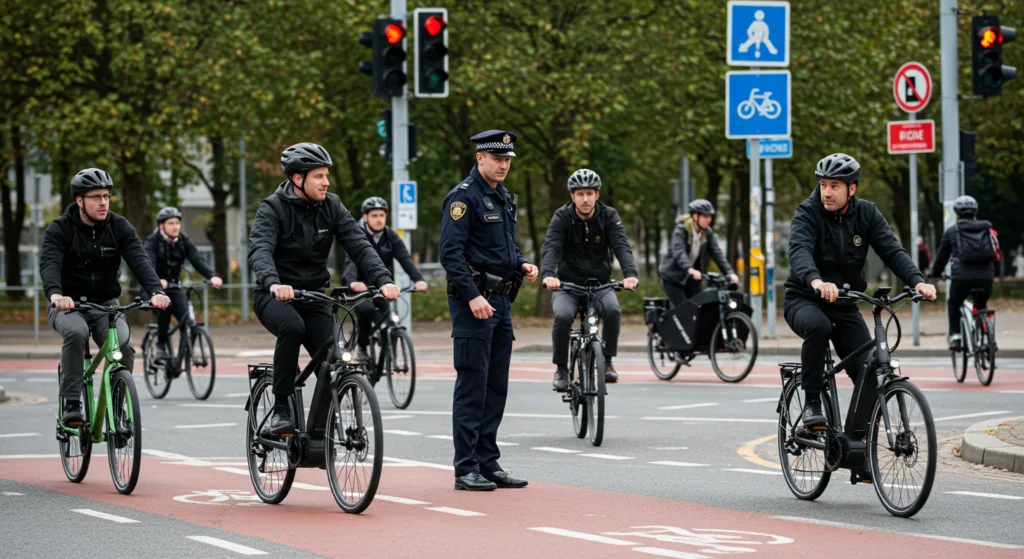
Electric bike regulations vary based on country and e-bike classification.
License Requirements
- United States: Most Class 1 and Class 2 e-bikes do not require a license. Class 3 e-bikes may have restrictions in some states.
- European Union: E-bikes with pedal assist up to 25 km/h (15.5 mph) do not require a license. However, e-bikes exceeding this limit may require registration and a driver’s license.
- Canada: No license is needed for e-bikes with 500W motors and speed limits of 32 km/h (20 mph).
Insurance Requirements
- Most countries do not mandate insurance for standard e-bikes (Class 1 and Class 2).
- However, speed-pedelecs (e-bikes exceeding 28 mph) may require liability insurance and registration in certain places like Germany and Switzerland.
- Some private insurance providers offer theft and damage protection for e-bikes.
Where to Check Regulations?
- Visit your local Department of Transportation website to confirm specific requirements in your area.
9. How to Maintain and Extend the Life of Your E-Bike?

Proper maintenance ensures your e-bike lasts longer and performs efficiently. Follow these key tips:
Battery Care
- Avoid letting the battery fully discharge; charge when it reaches 20-30%.
- Store at room temperature (50-77°F) to prevent overheating or freezing.
- Use the original charger to prevent power fluctuations.
Motor Maintenance
- Regularly clean the motor area, avoiding water exposure to electrical components.
- Mid-drive motors require chain lubrication and inspection every few months.
- Hub motors need periodic spoke and wheel alignment checks.
Tire & Brake Maintenance
- Check tire pressure weekly to ensure efficiency and avoid flats.
- Replace brake pads every 1,000-2,000 miles, depending on usage.
- Hydraulic disc brakes require fluid replacement every 12-24 months.
Chain & Drivetrain Care
- Lubricate the chain every 100-150 miles for smooth operation.
- Clean and check gears for wear, especially on mid-drive motors.
Regular Inspection Checklist
- Tighten loose bolts and screws every few months.
- Check electrical connections and display functions periodically.
- Get a professional tune-up annually for optimal performance.
Following these steps will maximize your e-bike’s lifespan and keep it running smoothly.
10. What Are the Pros and Cons of Owning an Electric Bike?

E-bikes offer numerous benefits, but there are also some drawbacks to consider.
Pros of Owning an Electric Bike
- Cost Savings
- Lower operating costs than cars (charging an e-bike costs less than $1 per full charge).
- No gas expenses or costly public transport fees.
- Health Benefits
- Encourages physical activity with pedal assist.
- Allows riders to travel longer distances without excessive fatigue.
- Eco-Friendly Transportation
- E-bikes reduce carbon emissions compared to cars.
- Sustainable alternative to fuel-based vehicles.
- Traffic and Parking Convenience
- Avoids traffic congestion in urban areas.
- Easier to park and store compared to cars.
- Accessibility
- Makes cycling easier for seniors and people with mobility challenges.
- Suitable for riders with varying fitness levels.
Cons of Owning an Electric Bike
- Higher Upfront Cost
- Quality e-bikes range from $1,500 to $5,000, which is higher than traditional bikes.
- Battery Limitations
- Most e-bikes have a range of 25-75 miles per charge, requiring frequent recharging.
- Battery replacement can cost $300-$800 after a few years.
- Heavier Than Regular Bikes
- E-bikes typically weigh 40-70 lbs, making them harder to carry or transport.
- Legal and Regulatory Restrictions
- Some areas have restrictions on e-bike usage on bike paths.
- Speed and power limits vary by region.
- Maintenance Costs
- Brake and drivetrain wear out faster due to motor assistance.
- Annual maintenance can cost $100-$300 for tune-ups and repairs.
Should You Buy an E-Bike?
If you’re looking for an efficient, eco-friendly, and cost-effective mode of transportation, an e-bike is a great investment. However, factor in battery range, weight, and maintenance costs before making a purchase.
Choosing the right electric bike requires careful consideration of motor type, battery life, cost, and legal regulations. Whether you’re commuting, exploring off-road trails, or looking for an eco-friendly alternative to cars, an e-bike can be a game-changer. By understanding key features, maintenance tips, and legal requirements, you can make an informed decision that fits your lifestyle and budget.
If you found this guide helpful, share it on social media to help others make the best e-bike choice! 🚴♂️


